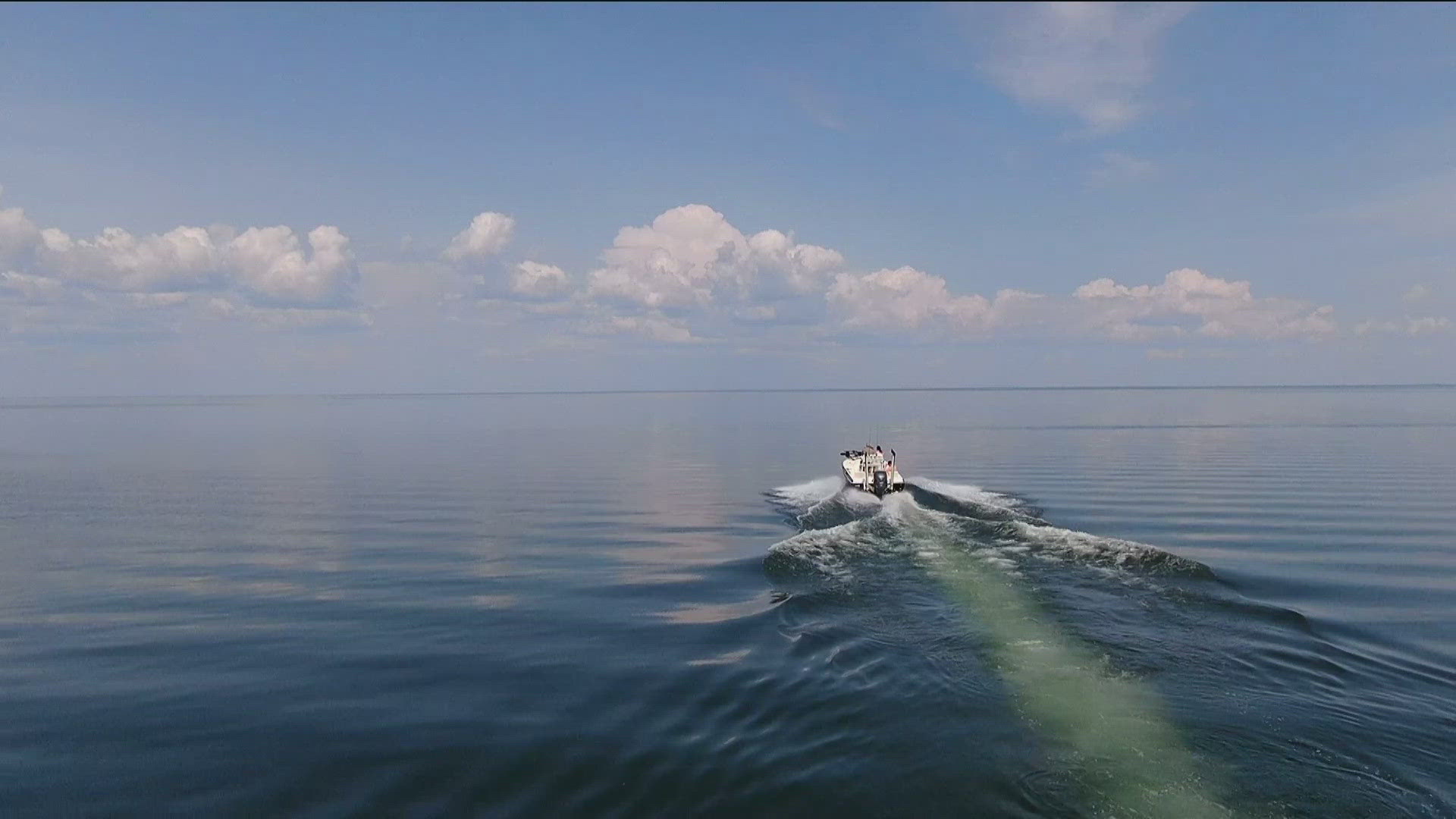Minnesota’s state fish—the walleye—has significant recreational, economic and cultural importance to the upper Midwest, but a recent study suggests the climate is changing faster than walleye can adapt, creating a dangerous domino effect.
The study's lead author, U-W Madison researcher Martha Barta, says walleye have encountered a timing problem where spawning and available food are growing out of sync.
“By that time the walleye hatch, their food resources are already gone,” said Barta, referring to years where spawning isn’t catching up with early ice-outs. “We are seeing these extreme years are more frequent and more severe over time, and this is associated with lower survival to adulthood of baby walleye.”
Historically, when the ice on lakes melts, it's one cue for walleye to spawn.
At the same time, the food chain begins. Microalgae called phytoplankton start to bloom, and microscopic zooplankton eat the algae. This becomes an all-you-can-eat buffet for baby fish.
Barta and her team looked at data from 194 lakes in Wisconsin, Minnesota and Upper Michigan, and found the changes in spawning dates aren't biologically keeping up with the changes in ice-outs.
“We've had our ups and downs both with population and sheer volume,” said Matt Treno, a longtime fishing guide on Lake Mille Lacs.
Walleye population has declined on the lake, according to the DNR.
Treno has seen the blame cast broadly: Invasive zebra mussels, spiney water fleas, political harvest battles and walleye cannibalism. He says, despite a mistrust between some anglers and biologists, this study has his ear.
“It would be silly for us to ignore the changes going on,” he said.
Mille Lacs was not part of the UW-Madison study, but DNR data of ice out dates show extremes growing wider. Spring 2024 set a record for earliest recorded ice out on March 16th.
“I think this is going to be hard news for some people to think about,” said Brian Nerbonne, regional fisheries manager for the Minnesota DNR.
Nerbonne reminds us that most lakes in the lower two-thirds of the state have walleye because they are stocked. He says if naturally reproducing walleye lakes in the north see declines, those changes can ripple across the state.
“There are limits to how much we can produce. I don't think we are going to be able to stock our way out of this problem," Nerbonne opined. "We are the land of 10,000 lakes. We got a lot of places where people want to walleye fish, and we may have to make priorities for where we can provide that opportunity for people.”
Nerbonne believes it's key to study what’s working and not working in naturally repopulating habitats of walleye, like Lake Mille Lacs, Leech, Winnibigoshish and Lake of the Woods.
The real impact of climate change on the future of walleye fry is yet to be hashed out, as other issues remain.
A separate study from the Minnesota DNR found that zooplankton production in some large Minnesota lakes has declined by up to 80% due to the introduction of invasive species like zebra mussels and spiny water fleas, according to Nerbonne.

